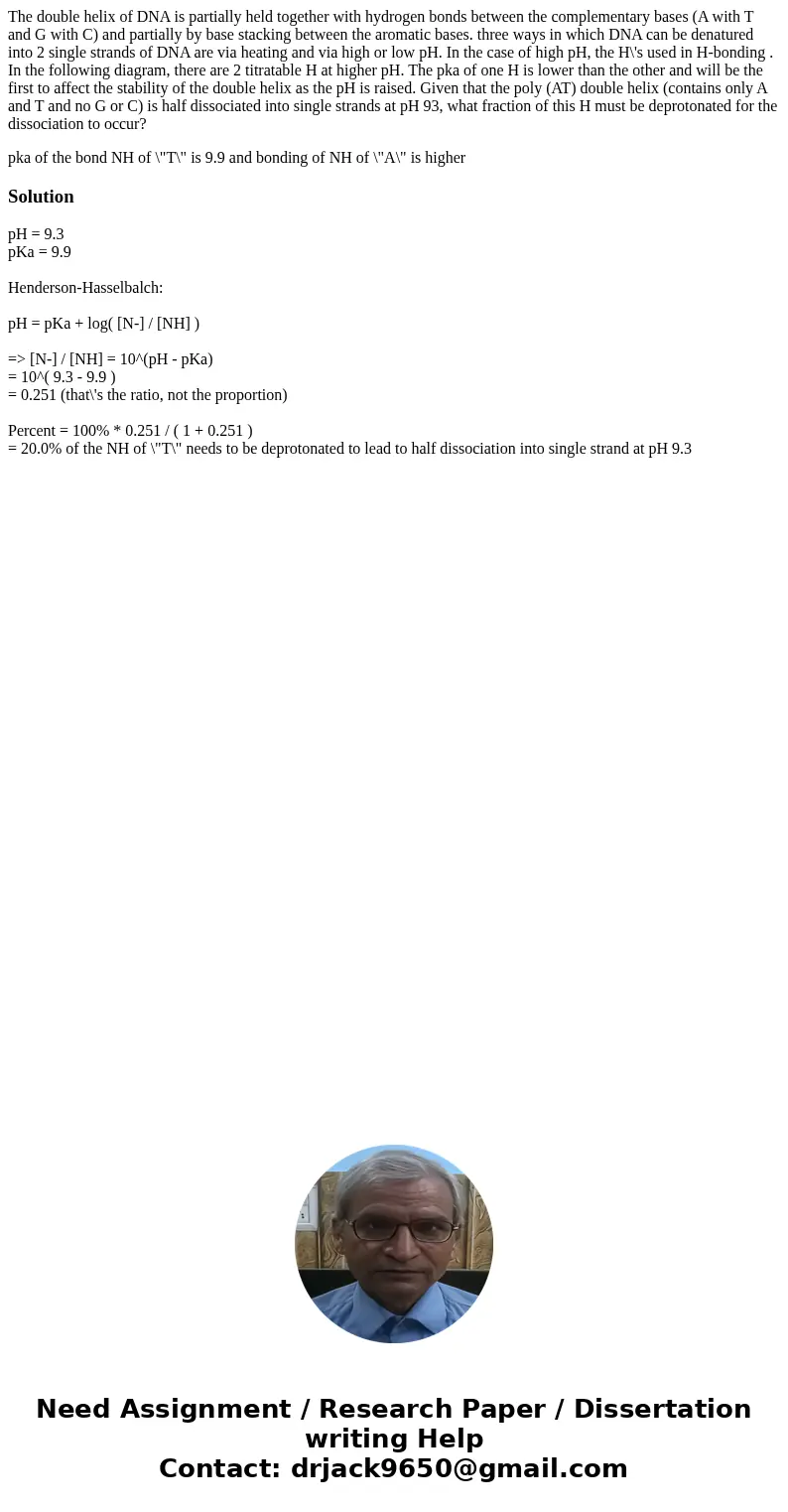The double helix of DNA is partially held together with hydr
The double helix of DNA is partially held together with hydrogen bonds between the complementary bases (A with T and G with C) and partially by base stacking between the aromatic bases. three ways in which DNA can be denatured into 2 single strands of DNA are via heating and via high or low pH. In the case of high pH, the H\'s used in H-bonding . In the following diagram, there are 2 titratable H at higher pH. The pka of one H is lower than the other and will be the first to affect the stability of the double helix as the pH is raised. Given that the poly (AT) double helix (contains only A and T and no G or C) is half dissociated into single strands at pH 93, what fraction of this H must be deprotonated for the dissociation to occur?
pka of the bond NH of \"T\" is 9.9 and bonding of NH of \"A\" is higher
Solution
pH = 9.3
pKa = 9.9
Henderson-Hasselbalch:
pH = pKa + log( [N-] / [NH] )
=> [N-] / [NH] = 10^(pH - pKa)
= 10^( 9.3 - 9.9 )
= 0.251 (that\'s the ratio, not the proportion)
Percent = 100% * 0.251 / ( 1 + 0.251 )
= 20.0% of the NH of \"T\" needs to be deprotonated to lead to half dissociation into single strand at pH 9.3

 Homework Sourse
Homework Sourse